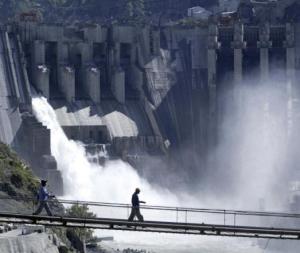Finding solutions to the world’s water crisis!
Water resources is a critical factor these days. So too the critical leadership that is sensitive and committed to augmenting water resources for agriculture and drinking water and for the general health of the economy and society.
What do we see on the ground?
 Very narrow political and sectarian considerations. Take the daily newspapers. One regional party in the South, “the DMK slams Kerala’s plant to build check dams across the Bhavani River” runs a headline! Supreme Court says that the Sutlej-Yamuna link canal decree cannot be flouted. And on and on.
Very narrow political and sectarian considerations. Take the daily newspapers. One regional party in the South, “the DMK slams Kerala’s plant to build check dams across the Bhavani River” runs a headline! Supreme Court says that the Sutlej-Yamuna link canal decree cannot be flouted. And on and on.
There are any number of smaller rivers and canals need to be attended to take waters further and further. Only when you live in a village you would realise how serious the water crisis is nowadays. Who is the implanting agency for water resources?
The water resources minister and the agri minister or their deputies must be travelling all the time. But they are nowhere to be seen nor we hear them about what they are doing!
That is the dilemma of a democratic government. There is so much to do, so much freedom for people’s representatives to do many useful things. But governance in a democracy always takes a beating!
With the widespread drought hurting the economy and the lives of vast mass of farmers, it is time to read anything that pertains to augmenting water resources and tapping all sources of waters. Just now we read a review of a new book on Meltdown in Tibet: China’s reckless destruction of the ecosystem from the highlands of Tibet to the deltas of Asia. By Michaeal Buckley (Palgrave Macmillan).
The Chinese has committed ecocide in the vast Himalayan land it had invaded in 1950, says the author who has also managed to get a foreward from the Tibetan monk, Dalai Lama.
Anyway, here is this book that details how Tibet is a quarter of China’s land mass. But here is some critical information on China’s water potential. Tibet’s 37,000 glaciers, its ecological status as the third pole, the largest store of ice after Antarctic and Arctic-and the great Asian rivers feeding five mega deltas-the Indus in Pak, the Ganges-Brahmaputra in India and Bangladesh, the Irrawaddy in Myanmar, the Mekong in South East Asia and the Yangtse in China-all have their origin in Tibet!
The Chinese have mastered the giant skills to divert large rivers.
So, let us pause here and think how much the world can benefit by equitably distributing these mighty rivers for the larger benefit of those countries in need of big water resources?
Let us all know how much remains to be done as the great tasks of peace and finding solutions to the world’s water crisis?